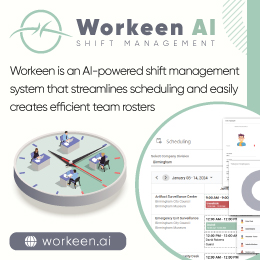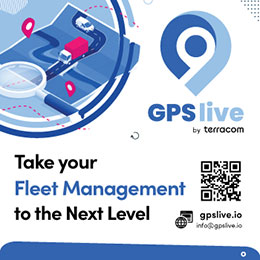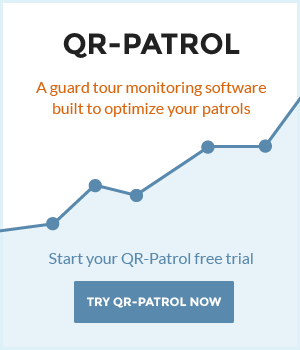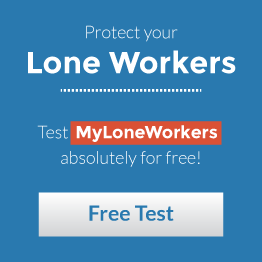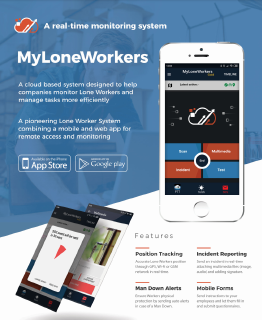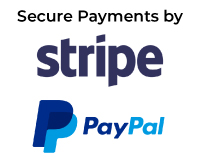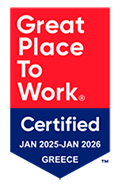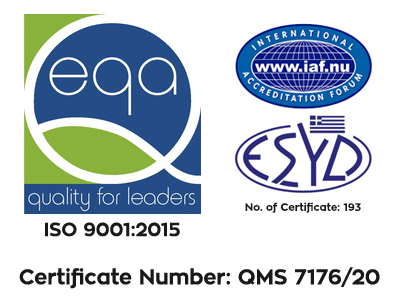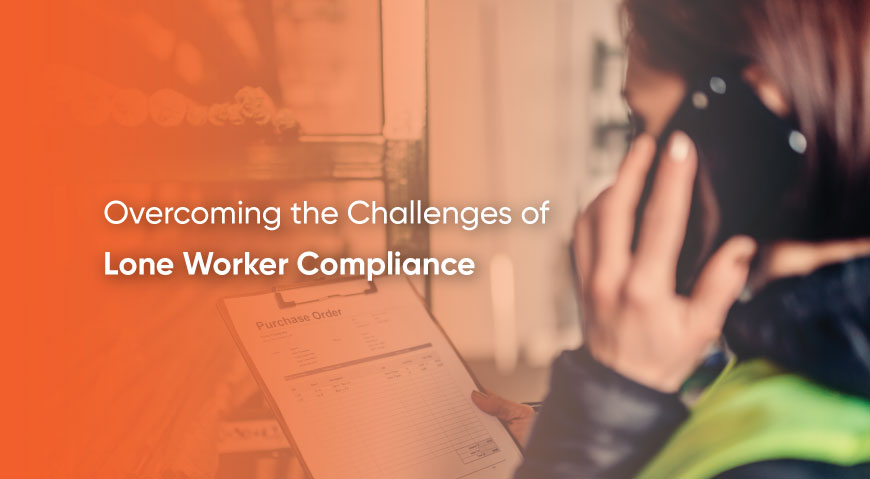
Overcoming the Challenges of Lone Worker Compliance
Table of Contents
In an era where remote work is reshaping industries, ensuring the safety and compliance of lone workers is a critical priority for organizations across industries. Lone workers—those who operate without direct supervision or immediate access to colleagues—face unique risks that require robust safety measures and adherence to strict regulations. From construction and utilities to cleaning services and field operations, companies must navigate complex lone worker regulations to protect their workforce while maintaining operational efficiency. However, achieving compliance worker standards can be challenging due to the dynamic nature of remote work environments and the administrative burden of monitoring and reporting.
This blog post explores the common challenges organizations face in ensuring lone worker safety and compliance and how MyLoneWorkers, a cloud-based workforce management system, simplifies the process with innovative tools and features. By addressing these challenges head-on, MyLoneWorkers empowers businesses to protect their employees, streamline operations, and meet regulatory requirements effortlessly.
The Importance of Lone Worker Compliance
Lone worker compliance refers to the adherence to legal and industry-specific regulations designed to protect employees who work alone, often in remote or hazardous environments. These regulations vary by region but typically require employers to implement a lone worker policy that includes risk assessments, regular communication, emergency response protocols, and detailed record-keeping. Failure to comply can result in hefty fines, legal liabilities, and, most importantly, compromised worker safety.
For organizations with field operations or remote blue-collar workers, compliance is not just a legal obligation—it’s a moral responsibility. A strong lone worker protection strategy ensures employees feel supported and secure, boosting morale and productivity while reducing turnover. However, implementing and maintaining an effective compliance program comes with several challenges.
Common Challenges in Lone Worker Compliance
- Monitoring and Communication Gaps: One of the biggest hurdles in lone worker safety is maintaining consistent communication with workers who are geographically dispersed. Without direct supervision, it’s difficult to monitor their status, location, or well-being in real time. Traditional methods like phone check-ins are unreliable, as they depend on workers remembering to call and may not provide immediate alerts in emergencies.
- Conducting Dynamic Risk Assessments: Lone workers often operate in unpredictable environments, from construction sites to isolated facilities. Conducting regular risk assessments tailored to each worker’s specific tasks and location is essential for compliance but can be time-consuming and complex. Many organizations struggle to update risk assessments frequently enough to account for changing conditions.
- Manual Reporting and Record-Keeping: Compliance with lone worker regulations requires meticulous documentation of worker activities, incidents, and safety checks. Manual reporting processes, such as paper-based logs, are prone to errors, difficult to organize, and time-intensive to compile for audits. This administrative burden can overwhelm managers and divert resources from core operations.
- Emergency Response Delays: In the event of an incident, such as a fall or medical emergency, lone workers need immediate assistance. Without automated systems, organizations may struggle to detect emergencies quickly or dispatch help to the worker’s exact location, putting their safety at risk.
- Balancing Compliance with Operational Efficiency: Implementing a lone worker policy that meets regulatory standards often requires significant time and resources. For businesses with lean teams, balancing compliance with day-to-day operations can feel like an impossible task, leading to shortcuts that compromise safety.
How MyLoneWorkers Simplifies Lone Worker Compliance
MyLoneWorkers is a comprehensive cloud-based workforce management system designed to enhance the safety and efficiency of remote blue-collar workers. With a full suite of safety features and automation tools, it addresses the challenges of lone worker compliance head-on, making it easier for organizations to protect their workforce and meet regulatory requirements. Here’s how MyLoneWorkers simplifies the process:
- Real-Time Monitoring and Alerts: The lone worker app from MyLoneWorkers is linked to a secure cloud-based monitoring hub that provides accurate, real-time tracking of workers’ locations using GPS, Wi-Fi, and GSM networks. Managers can monitor workers’ status and receive immediate alerts for critical events, such as a Man Down alert triggered by a fall or an external BLE panic button activated in an emergency. Features like SafePass, Welfare Check, and Geofence alerts ensure that workers are never out of reach, enabling rapid responses to incidents and enhancing lone worker protection.
- Automated Communication Tools: MyLoneWorkers eliminates communication gaps with automated tools that keep lone workers connected to the monitoring center. Periodic check-ins ensure workers confirm their safety at regular intervals, while two-way communication features allow them to report issues or request assistance instantly. These tools reduce reliance on manual phone calls and provide peace of mind for both workers and managers.
- Comprehensive Reporting for Audits: Manual reporting is a thing of the past with MyLoneWorkers’ digital record-keeping capabilities. All activities, alerts, and incidents are automatically logged and stored securely in the cloud, making it easy to generate detailed reports for compliance audits. Mobile Forms replace exhaustive paper reports, allowing workers to submit instructions, answer questions, or share comments directly through the app. Additionally, Scheduled Email Client Reports provide transparency to clients, showcasing the organization’s commitment to lone worker safety and compliance.
- Dynamic Risk Assessments: MyLoneWorkers enables organizations to perform customizable risk assessments tailored to each worker’s environment. These dynamic workflows ensure that safety measures evolve with changing conditions, keeping workers protected and compliant with lone worker regulations. By automating risk assessment updates, MyLoneWorkers reduces administrative burden and ensures ongoing compliance.
- Streamlined Management and Efficiency: By centralizing operations in a cloud-based platform, MyLoneWorkers simplifies the management of lone workers and automates internal processes. Features like schedule templates and task assignments help organize workers’ activities, while timekeeping tools record check-in and check-out times automatically. This streamlined approach minimizes human error, reduces administrative tasks, and allows managers to focus on core business objectives while maintaining compliance worker standards.
- Enhancing Worker Confidence: A robust lone worker policy supported by MyLoneWorkers fosters a culture of safety and trust. Workers feel confident knowing that their location is monitored, emergencies are detected instantly, and help is always a button away. This sense of security improves morale, reduces stress, and enhances productivity, creating a win-win for employees and employers.
Why Choose MyLoneWorkers for Lone Worker Compliance?
Unlike generic workforce management tools, MyLoneWorkers is specifically designed for the unique needs of lone workers in field operations and services. Its user-friendly lone worker app, combined with powerful cloud-based features, provides a reliable solution for lone worker safety and compliance. Here are a few reasons why organizations trust MyLoneWorkers:
- Scalability:Whether you manage a small team or a large workforce, MyLoneWorkers adapts to your needs, making it ideal for businesses of all sizes.
- Ease of Use: The intuitive interface and mobile app require minimal training, ensuring quick adoption by workers and managers.
- Cost-Effective: By automating processes and reducing administrative tasks, MyLoneWorkers saves time and resources while delivering measurable safety benefits.
- Regulatory Expertise: MyLoneWorkers is built with lone worker regulations in mind, providing tools that align with industry standards and legal requirements.

Best Practices for Implementing a Lone Worker Policy
To maximize the benefits of MyLoneWorkers and ensure lone worker compliance, organizations should follow these best practices:
- Develop a Clear Lone Worker Policy: : Outline safety protocols, communication procedures, and emergency response plans in a comprehensive policy that aligns with local regulations.
- Train Workers and Managers: Provide training on using the MyLoneWorkers app and understanding compliance requirements to ensure everyone is on the same page.
- Conduct Regular Risk Assessments: Use MyLoneWorkers’ dynamic workflows to assess risks frequently and update safety measures as needed.
- Leverage Automation: Take full advantage of automated alerts, reporting, and scheduling tools to reduce manual tasks and improve efficiency.
- Engage Workers: Involve lone workers in the development of safety protocols and encourage them to provide feedback through Mobile Forms to foster a collaborative safety culture.
Conclusion
Ensuring lone worker compliance is a complex but essential task for organizations with remote or field-based workers. The challenges of monitoring, communication, reporting, and risk management can feel overwhelming, but they don’t have to be. MyLoneWorkers offers a powerful, cloud-based solution that simplifies compliance, enhances lone worker safety, and streamlines operations. With real-time monitoring, automated tools, and comprehensive reporting, MyLoneWorkers empowers businesses to protect their workforce, meet lone worker regulations, and operate with confidence.
Ready to overcome the challenges of lone worker protection? Visit MyLoneWorkers to learn how our platform can transform your approach to compliance and safety today.
Contact us today to learn more about MyLoneWorkers or request a demo to see how MyLoneWorkers can benefit your organization.

